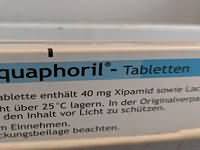CLINICAL USE
Thiazide diuretic: Hypertension Oedema
DOSE IN NORMAL RENAL FUNCTION
Oedema: 40–80 mg in the morning Maintenance: 20 mg in the morning Hypertension: 20 mg in the morning
PHARMACOKINETICS
DOSE IN RENAL IMPAIRMENT
GFR (mL/MIN)
DOSE IN PATIENTS UNDERGOING RENAL REPLACEMENT THERAPIES
IMPORTANT DRUG INTERACTIONS
Potentially hazardous interactions with other drugs
ADMINISTRATION
Reconstition
–
Route
Oral
Rate of Administration
–
Comments
–
OTHER INFORMATION
Monitor for hypokalaemia Diuresis starts within 1–2 hours, peaks at 4–6 hours and lasts for almost 24 hours Manufacturer advises to avoid in severe renal impairment due to reduced clearance
